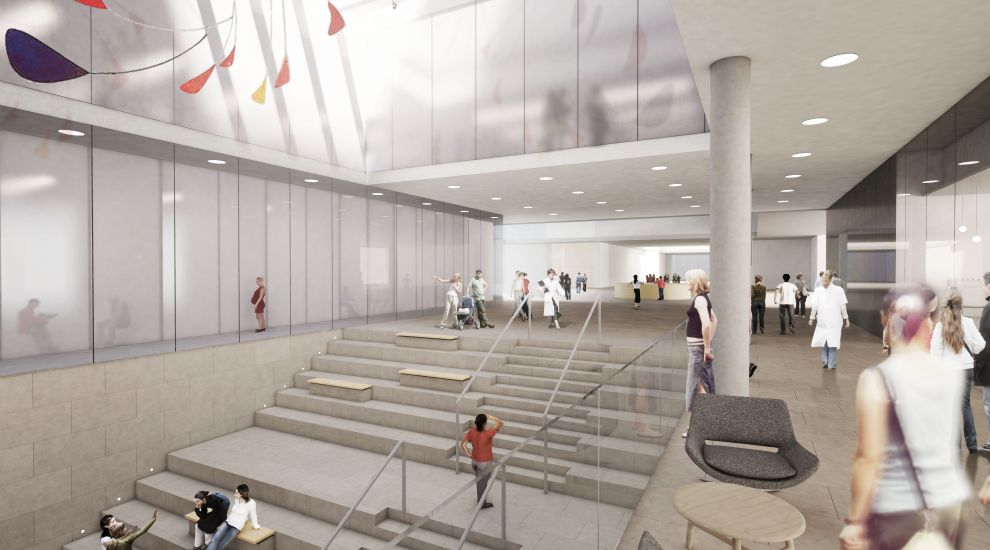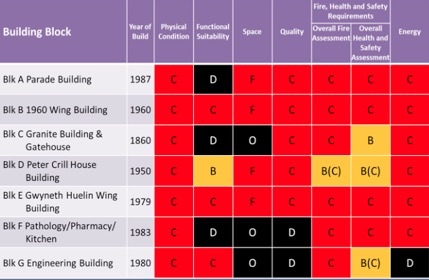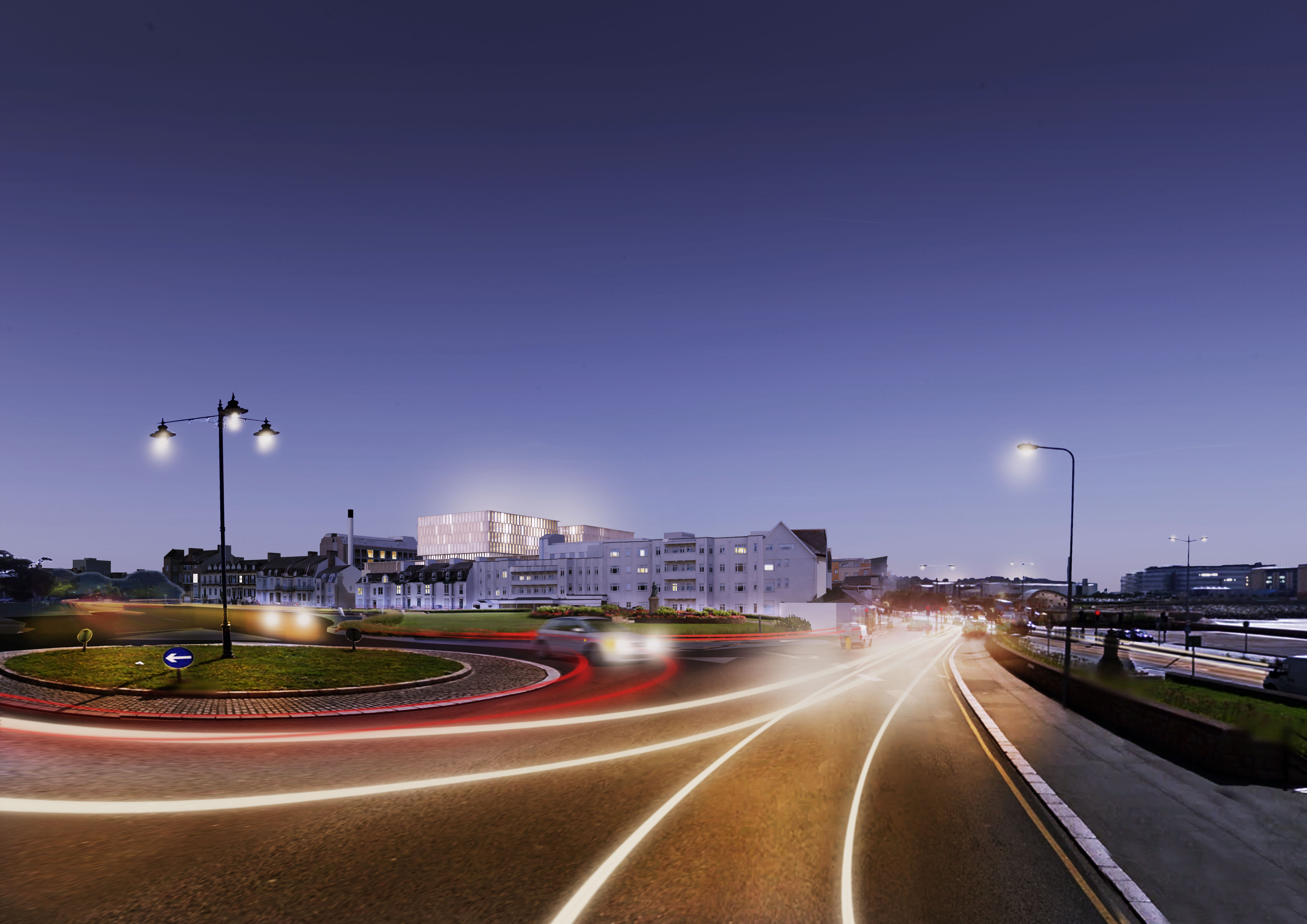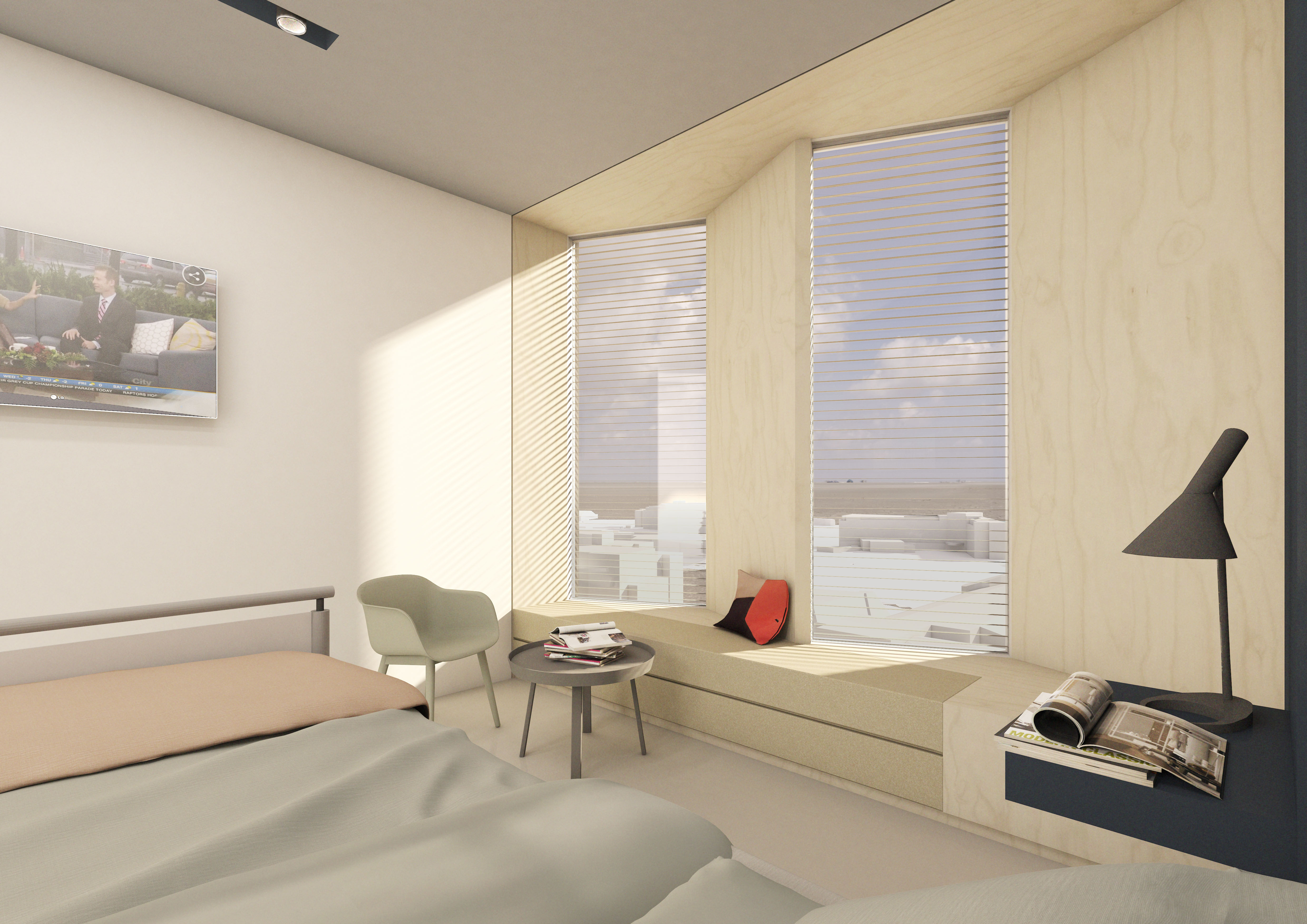

Eight storeys, nine operating theatres and nearly 200 futuristic ‘pod’ bedrooms… Ministers this week revealed their detailed plans for the new £466m Hospital, highlighting everything from costs to clinics.
Their proposals were published alongside detailed funding plans, which came after months of delays, finally concluded that the island’s largest ever capital project would be funded through borrowing up to £275m and using the island’s so-called ‘Rainy Day Fund’.
Express picked through the 235-page document, and came up with the top 10 things you need to know about the future of Jersey’s healthcare.
An analysis of the current hospital site - a mixture of builds extending from the 1800s to the 1980s - concluded that it was in terrible shape. An independent assessment found “significant asbestos” in the current building, which also suffered from blockages and overflows within its ageing drains. Air conditioning units were found to be “corroded, failing mechanically, and obsolete” while electrical elements were said to “fail to meet current hospital standards”, with emergency generators from the 60s and 70s are “well beyond their 30-year life-expectancy.”

Pictured: An assessment of the current hospital buildings.
The current water system also provides a risk of contamination by respiratory disease Legionella. The fire alarm system was also labelled as “obsolete and failing”, but was replaced as a matter of priority throughout 2016/17. An overall assessment of the hospital’s seven blocks yielded mostly ‘C’ and ‘D’ grades.
...and if it was, it would cost taxpayers £13.3billion up to 2084.
Though the new build requires significant investment, reduced maintenance costs in the long-term will yield significant savings. At a cost of up to £466million, the Future Hospital project is the equivalent of just over two years’ of normal expenditure for the Health service, which currently requires around £200million to run each year.
Current finance plans suggest using a bond to finance part of the scheme, but getting that bond sorted comes with its own cost. There’ll be a number of upfront fees associated with issuing the bond, and a number of advisers will have to be appointed, namely: bookrunners, who will market the bond to potential investors among other responsibilities, and legal advisers.
Issuing that bond is expected to cost up to £1.5million, and annual fees of approximately £1,000 per year will be incurred for the International Stock Exchange Listing. The States expect to pay out around £7.2million per year, which will be paid from the Rainy Day Fund’s returns, which are currently around 6%.
Eight storeys high, in fact. Plans for the Future Hospital, which will be a partial newbuild and part-refurbishment of the current site, say that it will take up 24% more space than than the current premises.

Pictured: The new hospital, as seen from Victoria Park.
That new space should help to accommodate the 45 to 50 extra beds - the exact figure is yet to be settled while internal designs are drawn up - and will result in a towering eight storey structure. This structure will feature an outdoor area in the upper quarter where patients and staff alike can sit outside, and enjoy views across the south coast. It will also be joined to Westaway Court via a series of subterranean tubes, which will carry test samples between the two premises.
It might be a new hospital, but the services provided will remain the same. Despite calls from some islanders to move radiotherapy services on-island, Hospital Managing Director Helen O’Shea explained that the demand was not great enough to justify the cost of doing so - even if the island was to accommodate Guernsey patients.
Lifelong conditions requiring ongoing treatment will be shifted to the refurbished Westaway Court site across the road. Its services will include: physiotherapy, pain clinic, neurology, rheumatology, cardiology, respiratory, clinical investigations, diabetes. Although the main hospital's services will remain the same, Infrastructure Minister Eddie Noel said that the new site incorporated "flexibility" to allow for new equipment to be added where possible.
While the children’s ward may still include some shared spaces, there will be 100% single rooms for adult inpatients. Those rooms have been described as glass ‘pods’, which each feature an ensuite bathroom. They’ve been made in order to enhance the privacy of individuals, and also mean that an infected bed space would not result in the closure of a whole ward, as has previously been the case. Those spaces are made to draw in as much natural light as possible with large windows, and will feature floor-to-ceiling sliding doors.

Pictured: An example of the rooms in the new hospital.
Project Director Bernard Place, a previous nurse of over 30 years, said that he hoped the new rooms would ensure that patients gain a better quality of sleep and help to reduce stress - factors that will contribute to their recovery.
Some have expressed concerns that the new hospital’s approximately 50 extra beds may not be enough as the population continues to grow - most recently at a rate of more than 1,000 new islanders per year. Hospital design officials have said that their ideas have been designed with the island's ageing population in mind, however, because islanders over the age of 65 - and even more those over 85 - are the hospital’s biggest users.

Pictured: The Hospital project development team said that Jersey's ageing population have been a major factor in their design plans.
They hope that improved services will result in fewer people requiring stays in the hospital, and those that do - namely, the older generations - will be accommodated with a more comfortable and “dementia-friendly” stay in single occupancy rooms.
It’s going to be a long time until the new hospital opens its doors - seven years, in fact. Building will be undertaken while patients continue to use the hospital, but they will be moved accordingly.
The Business Case suggests that, if approved for building, the new premises should continue to serve Jersey residents until 2084.
The Planning consultation opens in the coming week, which will see some islanders - those representing specific interest groups or areas of expertise - invited to present their evidence before an independent Planning Inspector, who will approve or deny the application.
It’s now islanders’ last chance to take advantage of the opportunity to shape their health future by commenting on the Planning Application online. Chris McCarthy, a former member of the Jersey Architecture Commission, is now urging islanders to “take this once in a lifetime opportunity.”
Comments
Comments on this story express the views of the commentator only, not Bailiwick Publishing. We are unable to guarantee the accuracy of any of those comments.